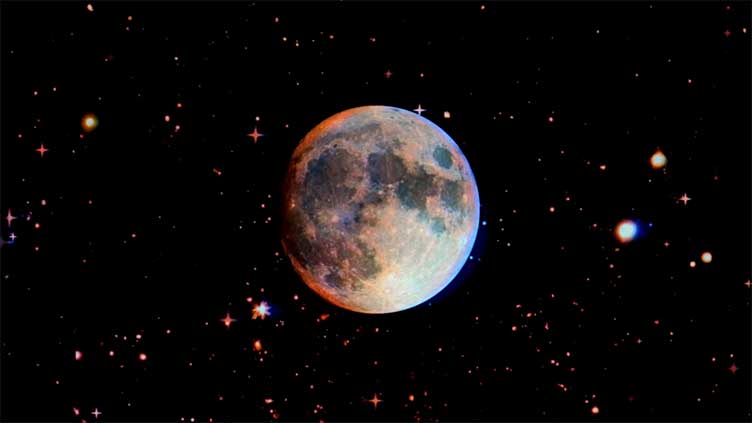Nasa to study noise on silent world of Moon

Technology
A comprehensive library of knowledge about the lunar environment
(Web Desk) - In an effort to understand the Moon's radio frequency environment, Nasa is set to launch the Intuitive Machines' IM-1 mission to the Moon's South Polar region in February 2024.
Aboard the IM-1 mission, a novel instrument named the Radio wave Observation at the Lunar Surface of the photo-Electron Sheath (ROLSES) will be deployed to scrutinise the dynamic radio energy environment near the Moon.
The ROLSES project, led by Dr. Natchimuthuk "Nat" Gopalswamy from Nasa’s Goddard Space Flight Center, is designed to detect and analyse radio emissions on the Moon, which can range from human-made interference to natural cosmic phenomena.
The ROLSES system, described by Dr. Gopalswamy as elegantly simple, consists of four long antennas — each about 8 feet in length — that are compactly packed for launch.
These antennas will unfurl on the lunar surface to capture the spectrum of radio emissions, from Earth-based activities that cause radio interference to natural emissions from celestial bodies like Jupiter, the Sun, and even our own Milky Way galaxy.
One of the unique challenges ROLSES will address is distinguishing between different sources of radio noise, each with its distinct spectral pattern.
This capability is crucial for identifying and filtering out interference from non-natural processes, such as those generated by the lunar lander itself.
By doing so, scientists can focus on authentic data, essential for accurate scientific analysis.
Moreover, the antennas of ROLSES are mounted at varying heights, allowing the instrument to measure the density of negatively charged electrons emanating from the lunar surface due to solar radiation.
Understanding how this electron cloud varies with altitude is vital for the design of future lunar observatories, as it affects radio frequency interference.
The data collected by ROLSES will contribute to a comprehensive library of knowledge about the lunar environment, guiding the design of hardware for future missions.
This information is key to NASA's overarching goal of returning humans to the Moon and establishing a sustainable presence there.
As the Artemis program progresses towards establishing a human foothold on the Moon, the insights gained from CLPS missions like IM-1 will prove invaluable in advancing lunar science and exploration.


